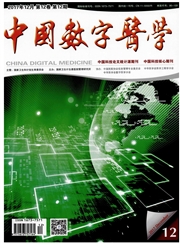

 中文摘要:
中文摘要:
目的:基于CT数据集获取盆腔结构表面轮廓信息,结合数字化三维重建技术,探讨3D打印技术研制个体化盆腔结构的方法及其在妇产科的应用价值。方法:选取1例妇科患者的CT血管成像(computed tomo-angiography,CTA)数据集,利用数字化三维重建技术构建各组织三维模型,再利用Z510型号3D打印机按照1∶1比例进行3D打印。结果:本研究成功构建出患者的腰骶椎、腹主动脉、髂总动脉、髂内外动脉、下腔静脉、髂总静脉、髂内外静脉、输尿管、子宫及子宫动脉的数字化三维模型,并利用3D打印技术1∶1打印出完整的3D模型。结论:3D打印模型不仅具有数字化三维模型一样的三维视觉功能及个体化特点,还具有可手动触摸、标记重要解剖结构的功能,为医学教学、临床、科研提供了一种新的方法。
 英文摘要:
英文摘要:
Objective To explore the application of 3D priming technology in individual pelvic structure of female and its value in obstetrics and gynecology based on the CT datasets of the pelvic structure and digital three-dimensional reconstruction. Methods CTA image dataset of a patient from gynecology department was obtained for constructing three-dimensional models of each organ using the digital three-dimensional reconstruction technology, then the digital 3D model with the same size as the model displayed was printed with Z510 3D printer. Results 3D models of patient's lumbosacral vertebrae, aorta artery, common iliac artery, internal and external iliac artery, postcava, common iliae vein, internal and external iliac vein, pelvis ureter, uterus and uterine artery were printed out in the same size replica of the virtual reality model. Conclusion 3D printed model has all the features of 3D vision and can be touched and felt by people, which can provide new insights for medical education, clinical and medical research.
 同期刊论文项目
同期刊论文项目
 同项目期刊论文
同项目期刊论文
 期刊信息
期刊信息
